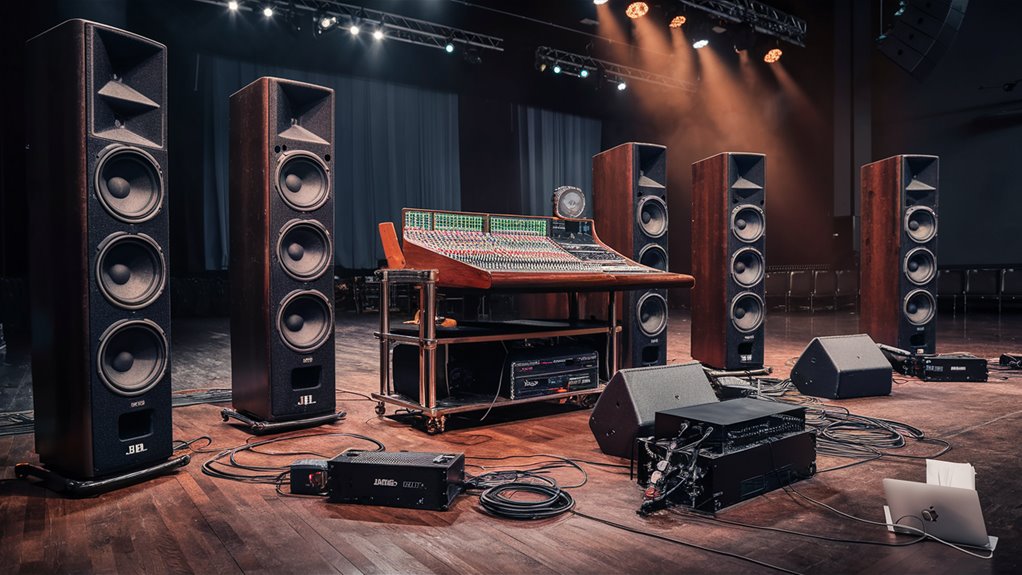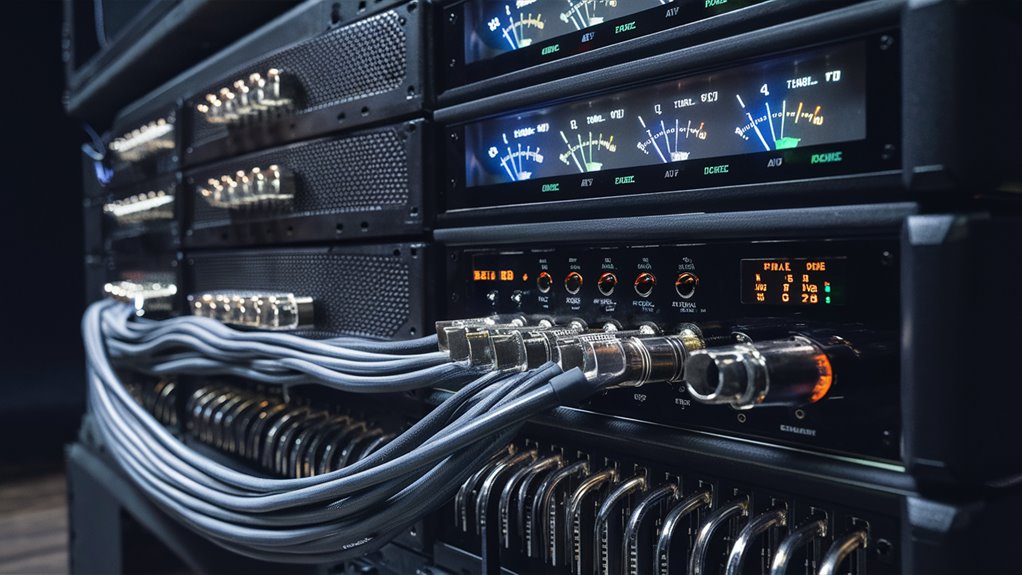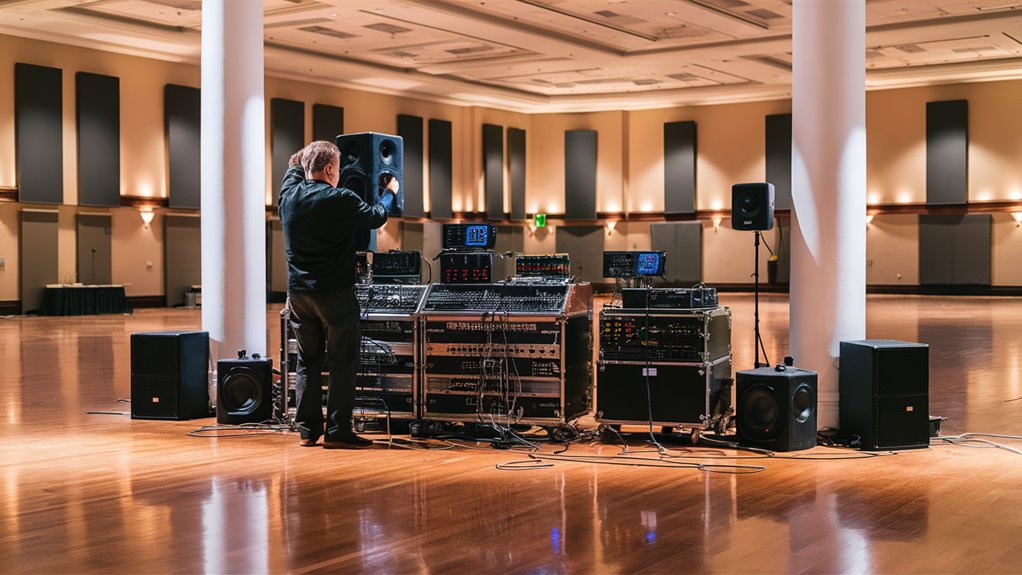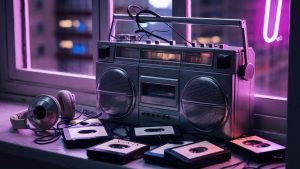
Sound Systems: Picking the Top Sound Gear for Your Event

Knowing the Sound Needs and Space Acoustics
When you pick a sound system, first check the sound quality of your space. RT60 data and sound effect stats help pick the right tools. Big places need careful speaker setup for sound to reach all over.
Key Sound Parts and Tech Details
Digital mix desks control high-end sound rigs, with:
- Deep signal work
- Changeable memory sets
- Multi-area sound mixing
- Added sound effects
Power boost needs close thought:
- Keep 20% extra power over what speakers need
- Match parts’ power needs well
- Choose right control factors for speakers
- Use heat safety and limit switches
Choosing and Setting Up Speaker Systems
Line array setups are great in:
- Big places and open air
- Tight sound from top to bottom
- Long reach
- Few sound clashing issues
Point source setups are best for:
- Small music spots
- Close up sound checks
- Tight sound control
- Easy to put
Always watch the sound path quality with pro wires, balanced links, and smart grounding to keep sound clear.
Must-Have Event Sound Gear Guide
Main Parts of a Sound System
Knowing key parts of event sound is vital for good sound quality.
It’s built on mix boards, boosters, speak units, and mics – each key for great sound.
Mix Desk Tech
The mix board runs sound signal flow. Top desks let you adjust:
- Each sound path level
- Equalizer settings
- Sound effects
- Where sound goes
Power and Amps
Pro amps must fit speakers well for best results. Watch for:
- Matching power needs
- Extra dynamic range
- Stop sound warping
- Stable charge across all tones
Setting Up Speakers

Pro speakers need careful place and choice, like:
- Main PA speakers
- Base sound units
- Stage sound for players
- Work out sound reach
- Needed sound levels
Picking and Using Mics
Smart mic use depends on what you need:
- Live voice mics 베트남ktv
- Mics for room sound
- Mics that move with you
- Best pick up pattern
- Needed tone response
Adjusting Sound Tools
Smart sound tools lift sound quality via:
- Squeeze sound range
- Cut background noise
- Adjust tones
- Stop sound return
- Fun digital sound effects
Sound Wire Setup
Pro sound wires need:
- Clean links
- Cut mess from other signals
- expert tips on timing
- Optimize sound path
- Plan B for wires
- Lift ground option
Guide to Room Size and Sound: How to Design a Sound System
Knowing Room Size and Sound Needs
Rm size and structure shapes shape sound system design.
Right checks of room size, roof height, and room shape help work out where to put speakers and sound paths.
These checks get you the needed Sound Pressure Level (SPL) for clear sound all around the room.
Checking Sound and Adding Stuff
Hearing tests focus on three big things: where sound bounces, how long sound lasts, and finding sound oddness.
The RT60 value (sound loss 60 dB) shows what sound stuff is needed.
Speaker delays are key in big rooms, worked out by sound speed 1,130 feet per second to keep sound clear over far spots.
More Sound Stuff to Think
Room noise changes the overall sound over noise level, needing good planning in system design.
Places with tall roofs or odd shapes do better with sound model tools, predicting exact sound moves.
This full plan makes sure sound is clear and well understood all through the space, bettering sound quality and how the crowd hears it.
Key Tech Facts
- SPL Needs: Worked out based on room size
- RT60 Values: Key for sound stuff choices
- Delay Times: Set by sound travel tips
- Sound over Noise: Made better for room conditions
- Cover Patterns: Mapped with sound model tools


